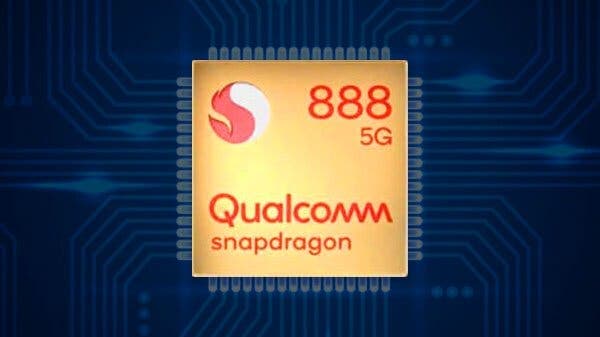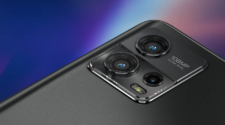A couple of days ago, Qualcomm officially released its next-gen flagship mobile platform. But instead of launching the previously-assumed Snapdragon 875, the company brought the Snapdragon 888. We have already talked about the reasons why the chip maker decided to call it in this way. But what’s more interesting at the moment is what makes this chip so attractive. First, the Snapdragon 888 is said to bring 10 times battery performance than its predecessor. Second, it will appear on myriads of smartphones almost simultaneously. So in this article, we have decided not only to review the Snapdragon 888 but also provide all information we have about the upcoming smartphones from various brands. So it should be helpful for you when deciding which one to choose. Moreover, their launches are scheduled to happen in a month or two. So you don’t have much time to orient.
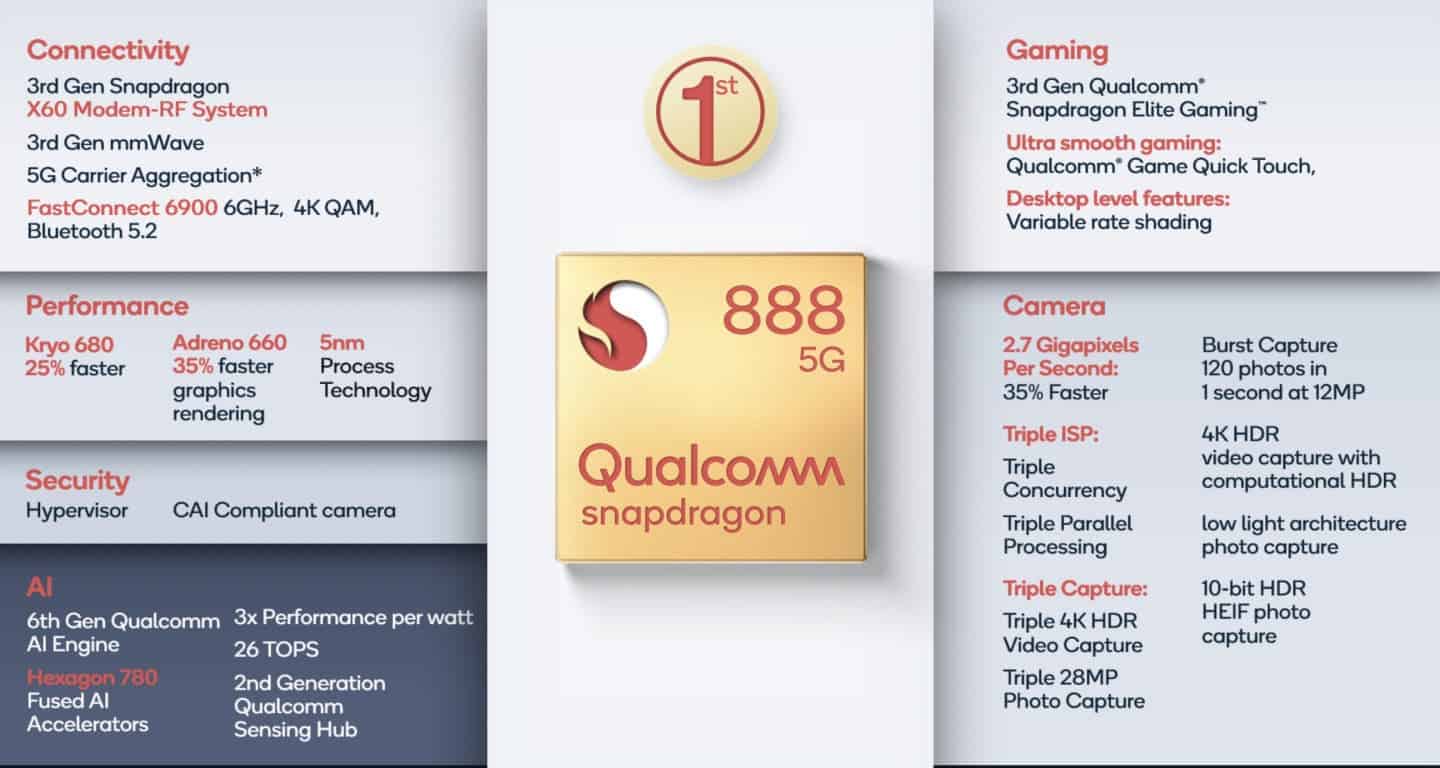
Snapdragon 888 Review
Kryo 680 CPU: Cortex X1 core is the highlight
The CPU of the Snapdragon 888 mobile platform is the Kryo 680. It is the industry’s first mobile platform using the ARM Cortex X1 architecture.
Specifically, it contains a Cortex X1 core with the highest frequency of 2.84GHz, 3 Cortex A78 cores with a highest frequency of 2.4GHz and 4 Cortex A55 cores with a highest frequency of 1.8GHz. Thus, it still continues the same 1 + 3 +4 design of the previous Snapdragon 865.
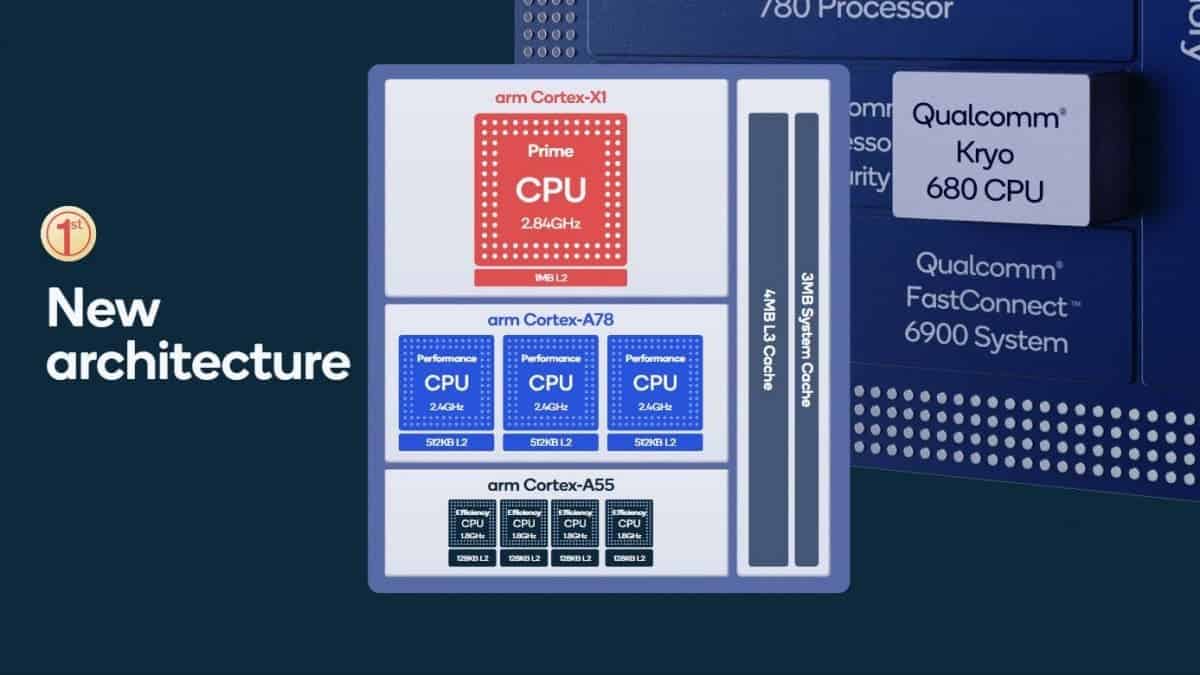
Among them, the Cortex-X1 super core has 1MB L2 cache, 3 Cortex-A78 cores each have 512KB L2 cache, and 4 Cortex-A55 cores each have 128KB L2 cache. The Kryo 680 CPU shares a 4MB L3 cache and a 3MB system cache.
The much-anticipated Cortex-X1 super core has powerful performance, which can increase the overall performance of the CPU by 25%. Also, the overall efficiency of the entire CPU cluster is also increased by 25%.
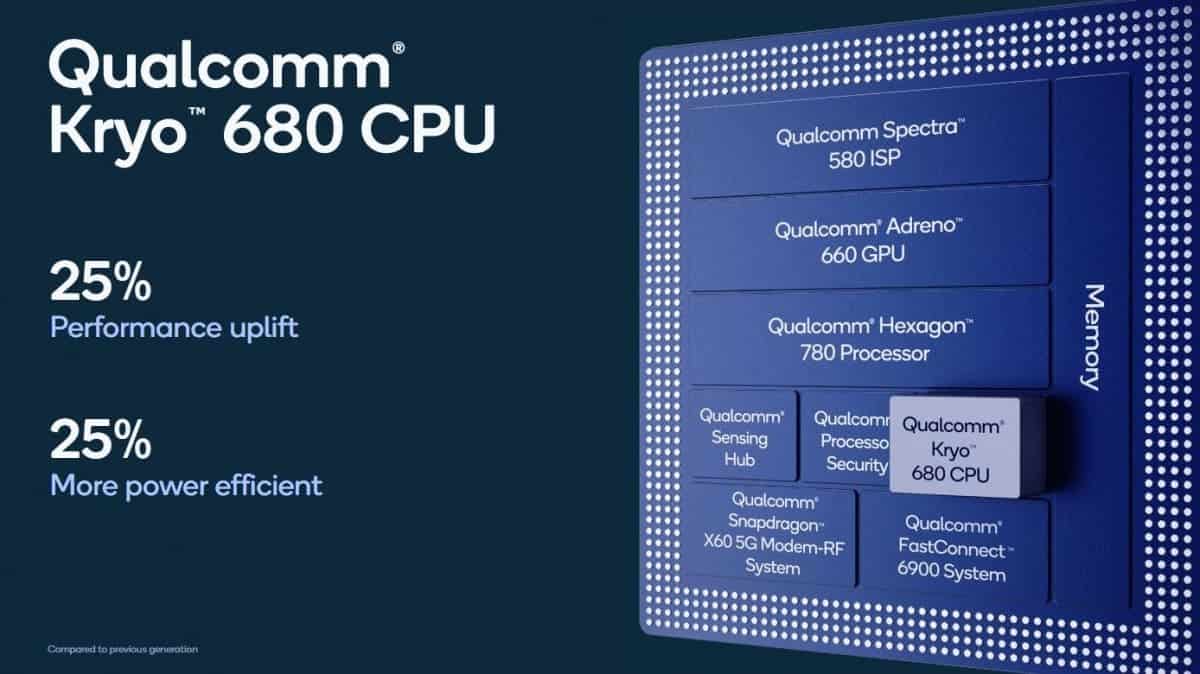
The Snapdragon 888 can maintain a long-term stable operation compared to competing products.
Adreno 660 GPU: supports variable resolution rendering technology
The Snapdragon 888 mobile platform integrates a brand new Adreno 660 GPU. The graphics performance of this GPU is 35% higher than the previous generation Adreno 650. Plus, the energy consumption is reduced by 20% compared to the previous generation. When participating in AI computing, the AI performance of Adreno 660 GPU is also improved by 43%.
In addition to regular performance upgrades, this year’s Adreno 660 GPU has an important feature upgrade. Now, it supports real-time variable resolution rendering technology (VRS). The latter will help reduce GPU workload and significantly enhance game performance.
Specifically, this technology means that when rendering each frame, the GPU executes a shading program for each pixel to calculate its color. This means that 3.6 million pixels are colored. With variable resolution rendering, you can color the entire frame using only 1.4 million pixels. This will reduce the total number of pixels for overall shading by 40%, which greatly reduces the GPU workload. As for an average user, you should wait for more immersive gaming experience without sacrificing visual fidelity.
In addition, the Adreno 660 is not only a graphics engine, but also an excellent display engine that can achieve the best image quality, such as support for OLED display consistency, improved display image quality, and Demura and sub-pixel rendering technology to further improve smartphones image quality .
Connectivity: Snapdragon X60 modem and FastConnect 6900 system
The Snapdragon 888 is the first Qualcomm flagship mobile platform equipped with an integrated 5G modem of the Snapdragon X60. The latter is the first baseband to provide millimeter wave and Sub-6GHz carrier aggregation and Sub-6GHz TDD-FDD carrier aggregation 5G solutions.
Specifically, the Snapdragon X60 can provide the world’s fastest commercial 5G network speed with up to 7.5Gbps downlink and 3Gbps uplink. It is globally compatible, supporting millimeter wave and Sub-6GHz frequency bands, as well as global multi-SIM cards, independent networking , Non-independent networking, FDD, TDD and dynamic spectrum sharing, etc.
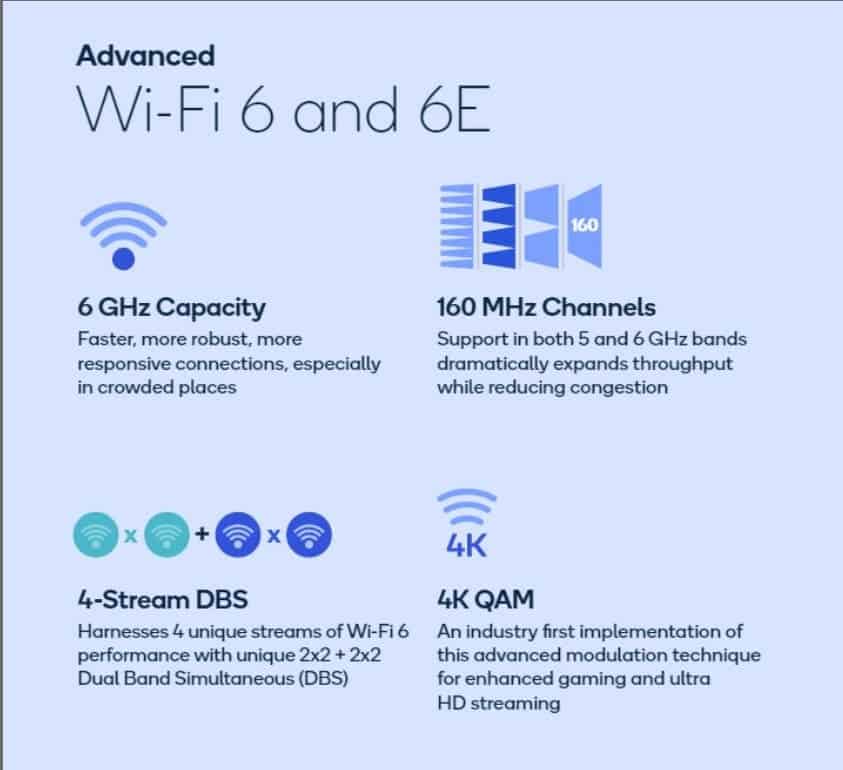
In addition, the Snapdragon 888 mobile platform also integrates the FastConnect 6900 mobile connection system. It can support Wi-Fi 6 and Wi-Fi 6E, expand Wi-Fi 6 to the 6GHz frequency band, and obtain 3.6Gbps of multi-gigabits transfer speed.
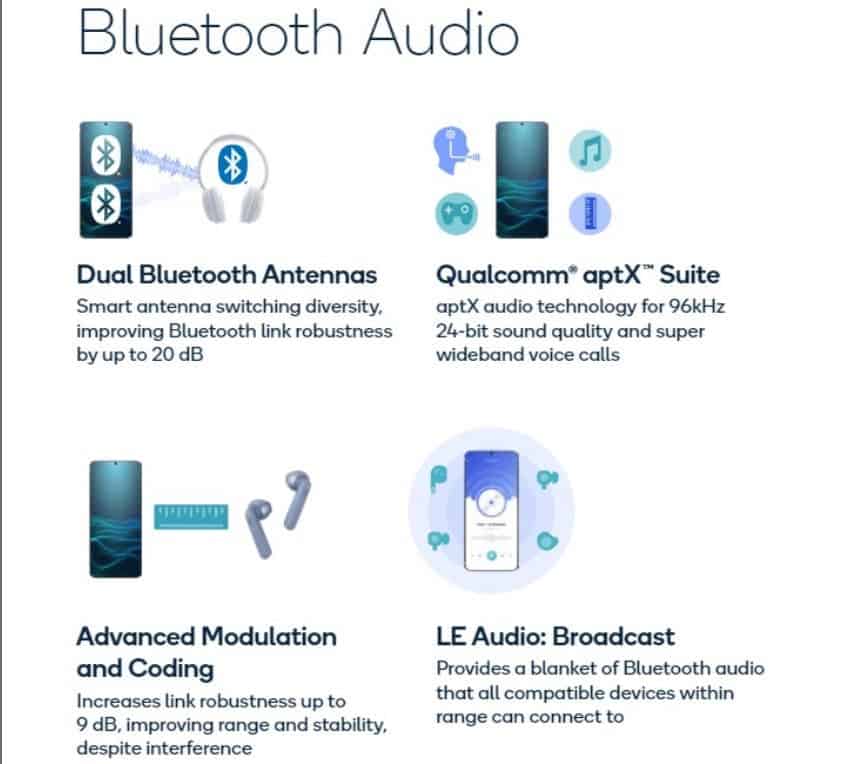
Hexagon 780 processor: Fusion AI accelerator architecture
The Snapdragon 888 comes with a redesigned Hexagon processor. This year’s Hexagon 780 uses a fusion AI accelerator architecture. In the previous Hexagon processor of Snapdragon 865, there were scalar, tensor and vector accelerators. But they were separate. In the Hexagon 780 processor, the physical distance between these accelerators almost disappeared.
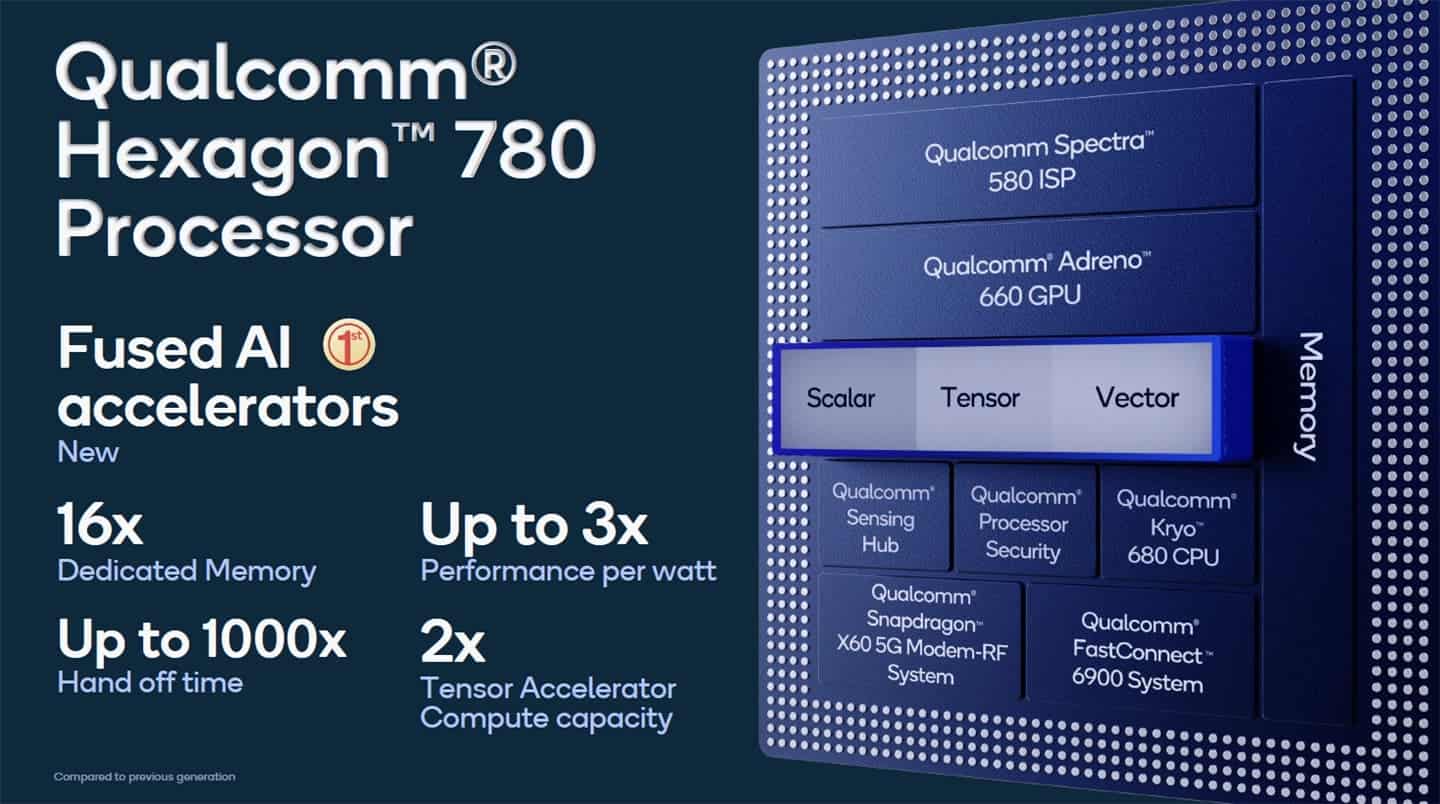
Not only that, Qualcomm also added a large amount of shared memory between these three different accelerators, allowing them to share and move data faster and more efficiently. According to Qualcomm, the addition of dedicated shared memory allows the Hexagon 780 to increase its performance in a single application by 16 times. In some applications, the data interaction timeliness can be increased by up to a thousand times.
In addition, the performance of these accelerators has also been improved. The performance of scalar accelerators has increased by 50%, and the processing speed of tensor accelerators is twice that of the previous generation. More importantly, while the performance has increased, they have also increased each Watt performance and energy efficiency are 3 times higher than the previous generation.
Spectra 580 CV-ISP: the first image information processor that supports three ISPs
In this year’s Snapdragon 888 mobile platform, Spectra 580 CV-ISP has an important function upgrade. First of all, Spectra 580 is Qualcomm’s first image information processor that supports three ISPs. Thus, it allows multiple cameras on smartphones to perform triple concurrent and triple parallel processing, thereby raising professional image quality to a completely new level.
The design of the three ISPs can derive many applications. For example, it can support users to use 3 different cameras to shoot videos at the same time on a smartphone, and then generate 3 videos, each of which can reach 4K HDR quality. Or you can take 3 photos at the same time, each of which can be a 28-megapixel 30fps zero shutter delay mode.
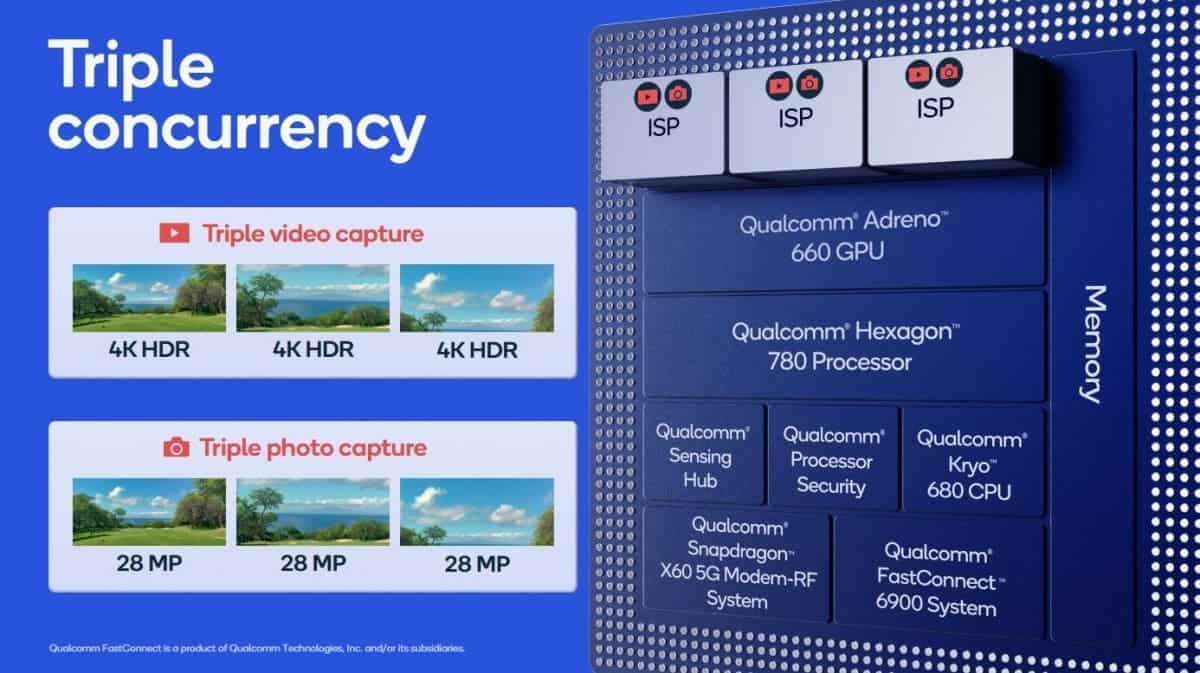
At the same time, the three ISPs can also make the switching of multi-camera phones between different focal lengths smoother. When users use wide-angle shooting, other cameras will be in standby at any time in the background, which is much smoother than the previous cold-start switching experience.
Other Improvements
In addition to the three ISPs, Spectra 580 has also improved speed, image quality and computer vision. Its processing speed is 35% faster than the previous generation and can process 2.7 billion pixels per second.
This pixel processing capability allows smartphones to shoot video at 30fps with a combination of 64MP and 25MP at the same time, and can capture 120 frames in 1 second, each with 12MP.
The Spectra 580 ISP also supports Qualcomm’s new low-light architecture. The speed combined with the new-generation AI engine of the Snapdragon 888 platform can greatly improve the ability to shoot photos in low-light environments. As long as the illumination is 0.1Lux, it can take amazingly detailed photos.
In addition to these, the new Spectra 580 ISP also supports the sensor technology of single-frame progressive HDR sensors. The single-frame progressive HDR image sensor technology also benefits from the Spectra 580’s three ISP design, which can output three independent long, medium and short exposures for each frame. There is a big difference between the multi-frame synthesis of each frame of single exposure in mobile HDR.
Based on this technology, Snapdragon 888 can apply multiple exposure calculations for HDR in video and photo shooting, so that it can not only shoot 8-bit JPEG. It can also use HEIF format to take 10-bit color depth photos.
In addition, the Spectra 580 also supports the shooting of 4K/120fps ordinary video and ultra-high-definition slow-motion video, combined with a 120HZ screen to play at 120fps.
The Spectra 580 also supports Qualcomm’s 10th generation 3A algorithm (autofocus, auto exposure and auto white balance), which is the first 3A algorithm empowered by AI.
The sixth generation AI Engine: computing power up to 26TOPS
The Snapdragon 888 comes with the sixth-generation AI engine. One of the biggest improvements is what we mentioned earlier. The Hexagon processor is redesigned and adopts an architecture that integrates AI accelerators. At the same time, the computing power of the sixth-generation AI engine has reached 26 TOPS. This is a huge improvement compared to the 15 TOPS of the previous generation.
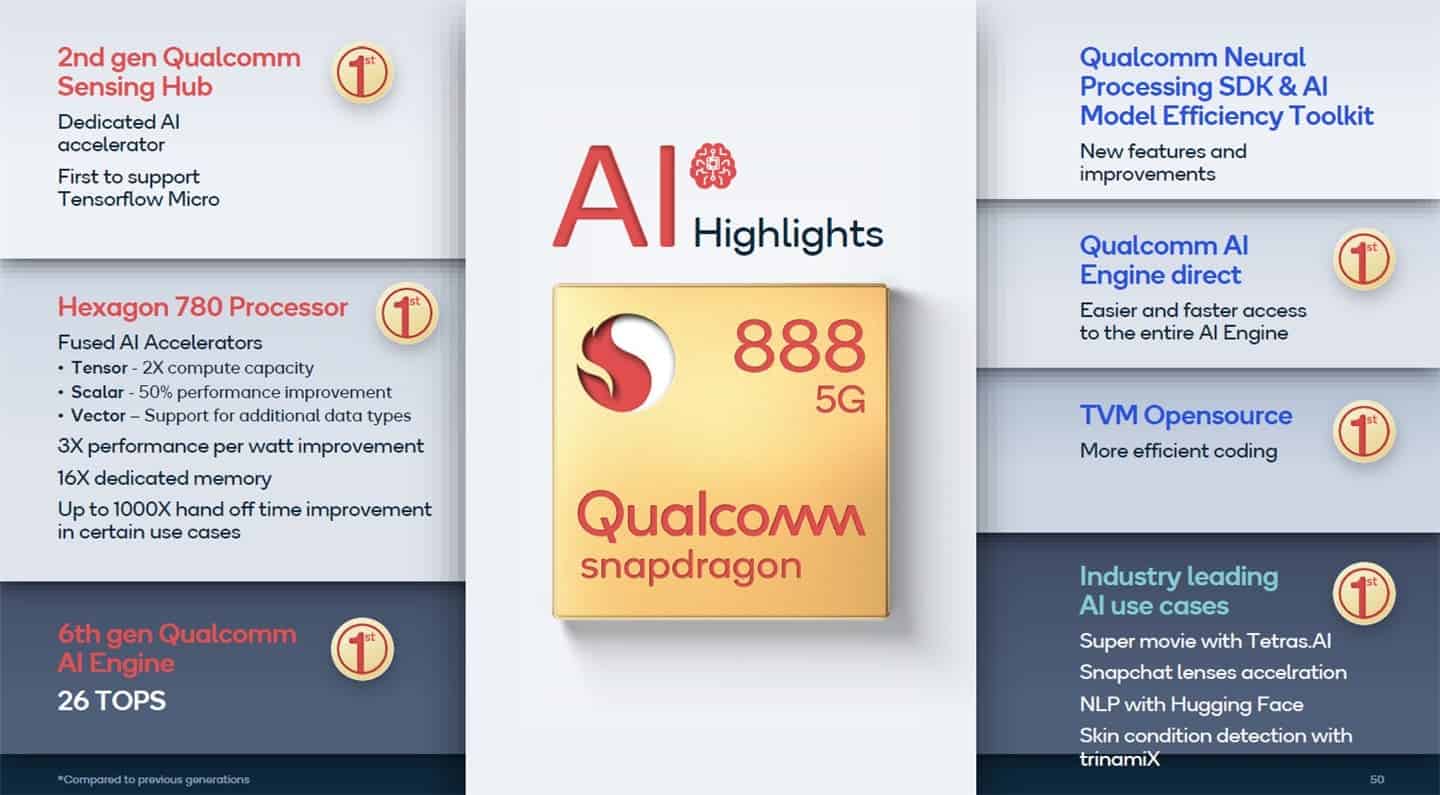
Gizchina News of the week
In the sixth-generation AI Engine architecture, Qualcomm’s second-generation sensor hub is also integrated. In it, Qualcomm has added a dedicated, always-on, low-power AI processor, which increases the AI performance of the sensor hub by 5 times. This additional AI processing capability allows the Hexagon processor to share up to 80% of the workload to the sensor hub, thereby saving power. The power consumption of the Qualcomm sensor hub for all processing is less than 1mA.
Qualcomm is also working with Google on its latest TensorFlow Micro framework to ensure that developers can easily access the Qualcomm sensor hub.
Snapdragon Elite Gaming system
Through the new Snapdragon Elite Gaming technology system, the Snapdragon 888 mobile platform has also improved its overall performance at the game level.
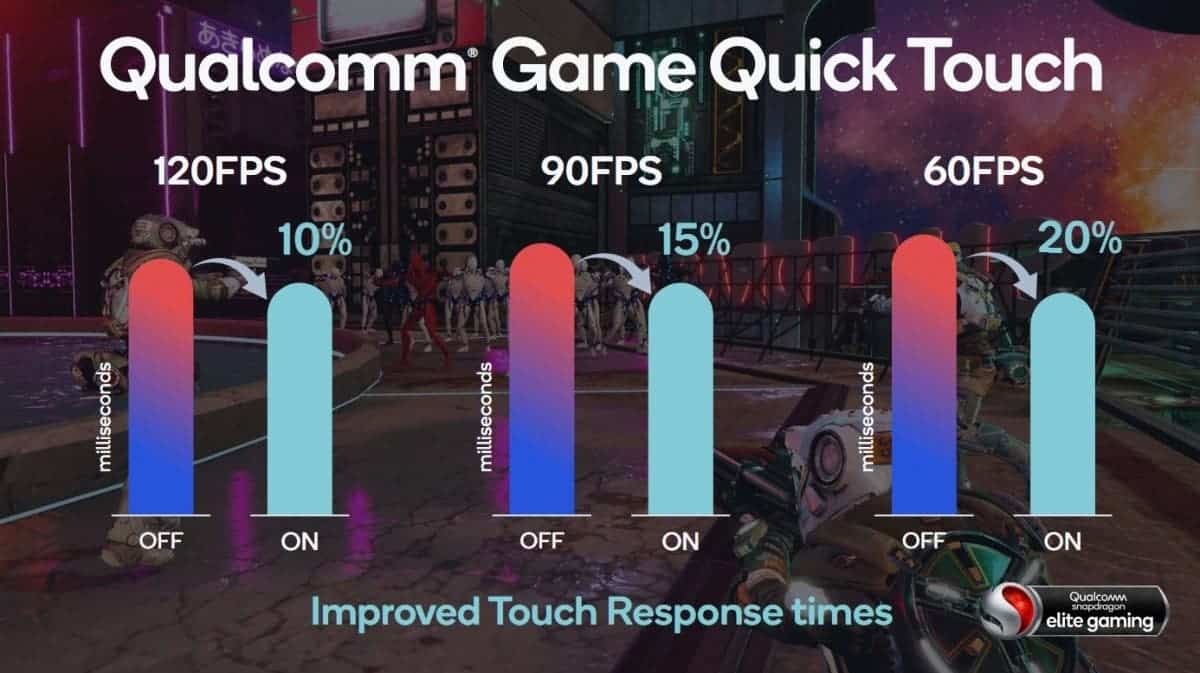
Here, Qualcomm introduced a new feature for Snapdragon Elite Gaming – Qualcomm Game Quick Touch. This technology will optimize the touch delay problem caused by the display frame synchronization time, refresh time, large workload and other factors during the game.
The Snapdragon 888 can increase the response speed from touch to display by 20%. So even games with frame rates up to 120fps will benefit from their touch response time.
The new Elite Gaming also supports 5G and Wi-Fi 6 cloud games, and can stream Xbox Game Pass through the cloud, introducing Xbox to the Snapdragon terminal. It also supports Google Stadia and Amazon Luna.
In addition, the new Snapdragon Elite Gaming technology system will also support 144 FPS game frame rate, end-game forward rendering, GPU driver update, game true 10-bit HDR display, Dolby Atmos, and Qualcomm aptX Adaptive audio.
Security
In addition to various performance and functional feature upgrades, the Snapdragon 888 has not forgotten to further enhance its own security attributes. The new mobile platform also adopts some brand-new security strategies to escort terminals and users.
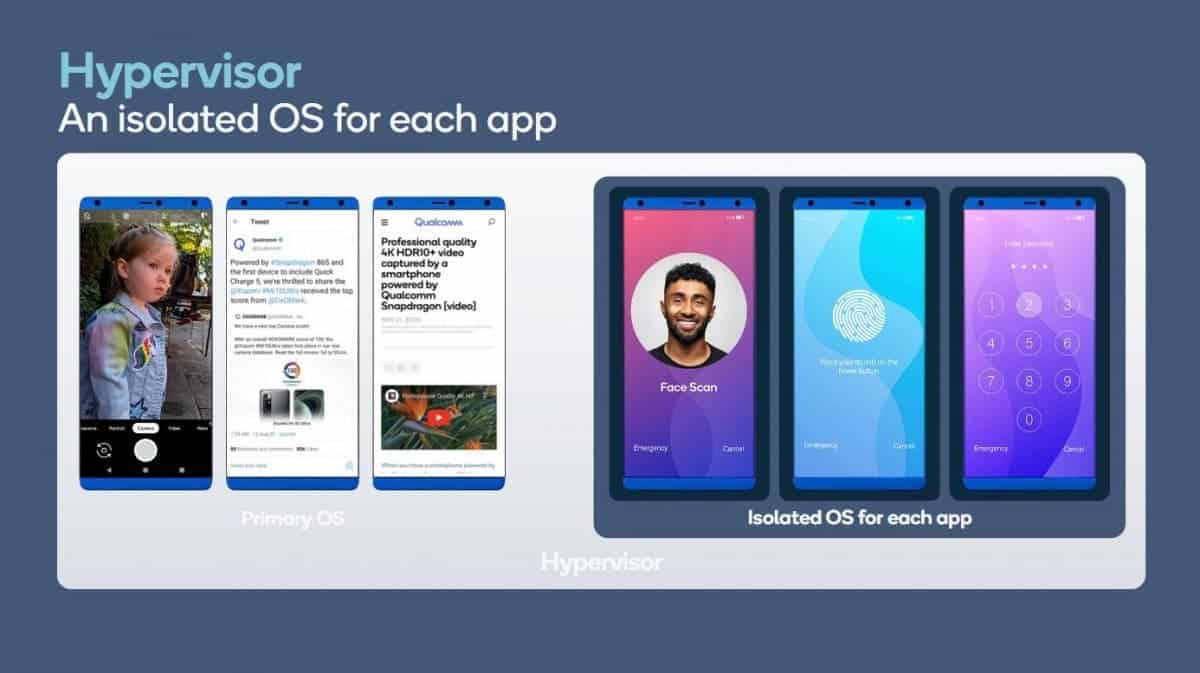
First of all, the Snapdragon 888 will be the first Snapdragon mobile platform to support Type-1 Hypervisor. This feature was previously only popular on desktop computers and is mainly used to run multiple operating systems in their respective independent secure spaces. The Snapdragon 888 introduces this technology into smartphones to open up a new user experience.
Secondly, the Snapdragon 888 also used the wireless edge service launched by Qualcomm in 2018. In this service, developers can integrate it into their applications and services to achieve secure remote management of devices. At the summit, Qualcomm demonstrated the use of its terminal-side security technology and Qualcomm’s wireless edge cloud service to protect future photography.
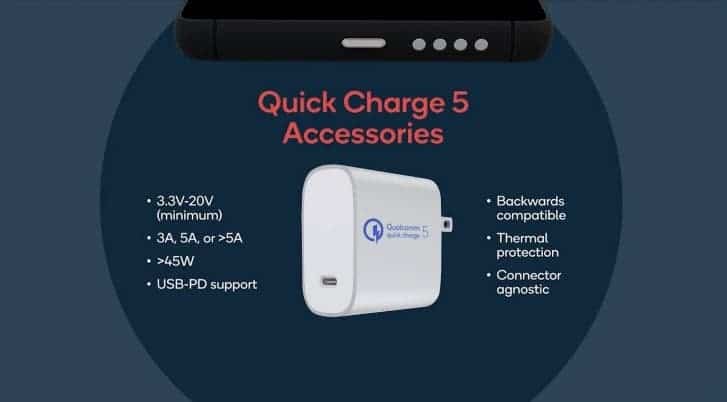
Snapdragon 888 vs Snapdragon 865
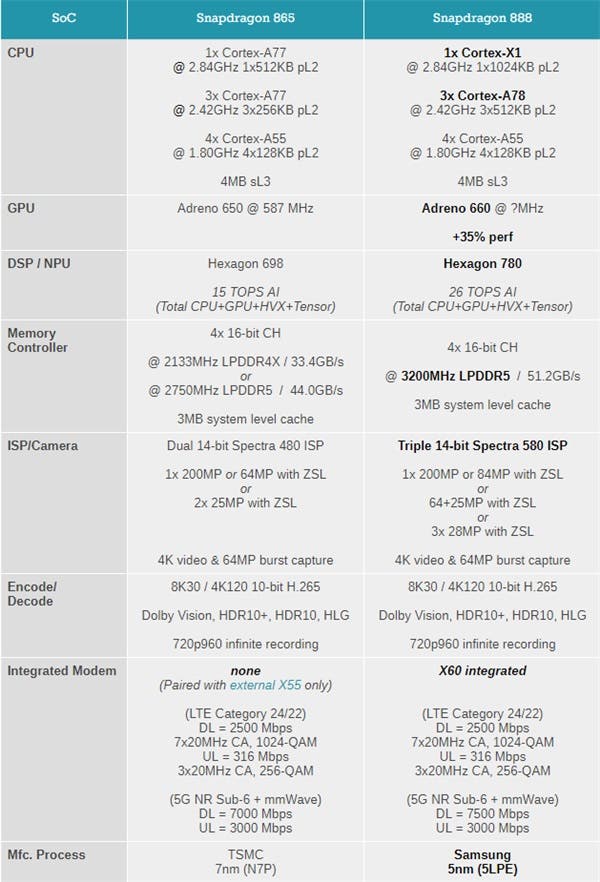
Photo credit: AnandTech
Which Brand Smartphone With Snapdragon 888 To Choose?
Xiaomi Mi 11 / Xiaomi Mi 20
Xiaomi Mobile has already officially announced though Weibo that the Xiaomi Mi 11 will be the world’s first smartphone to come with this chip onboard.
The Xiaomi Mi 11 series will have at least two devices – Mi 11 and Mi 11 Pro. The latter should come with a 2K display. Subsequent leaks show that the display may actually be 2K+ because the horizontal pixel is 3200. Also, it should support a 120Hz refresh rate.
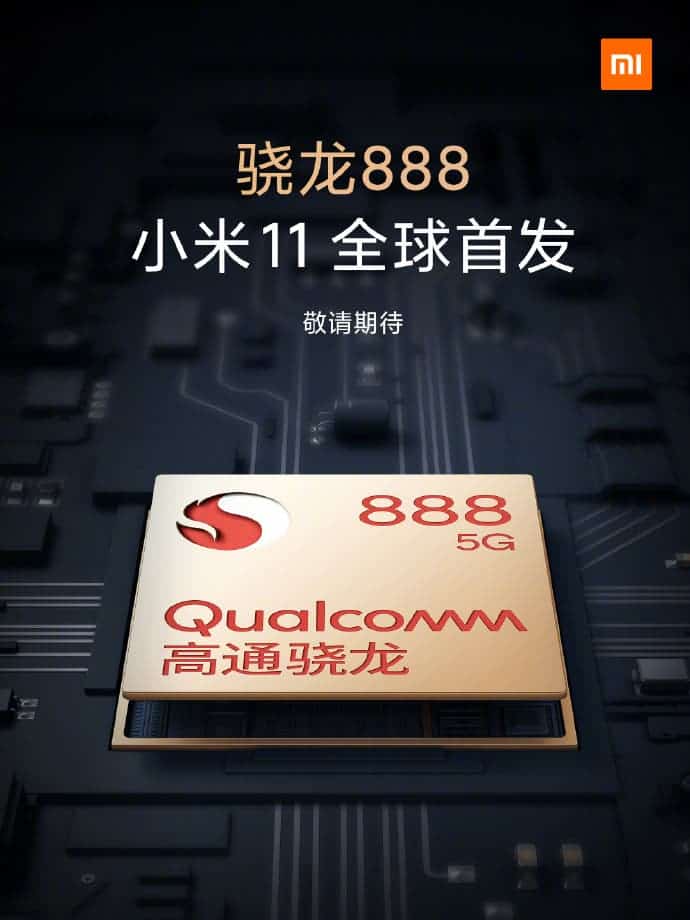
The Xiaomi Mi 11 will sport a 108MP triple camera. Furthermore, it will support 30x zoom as well as an ultra-wide shooter that also works for macro shots. According to a recent leak, one of the Xiaomi Mi 11 series will come with a 4-in-1-pixel binning technology. The main camera of this phone will capture images at 50MP, however, the telephoto lens shows 12MP. As of now, we are not sure if it is a straight 12MP lens or a 4-in-1 48MP lens. Although 50MP lenses are not common, Huawei’s P40 previously used a 50-megapixel (RYYB, 23mm, F1.9 aperture) main lens. Furthermore, the main camera of this smartphone is a super-outsole model.
Redmi K40 Pro
After the event, Redmi Manager, Lu Weibing, announced that Redmi will also be among the first batch of flagships coming with the aforementioned chipset.
According to rumors, the Redmi K40 Pro will not be much different from its predecessor the K30 Pro. It will keep the bezel-less display design thanks to the pop-up camera mechanism. Most companies have left this design in 2020 in favor of the Punch-Hole selfie. While the next year may bring more in-display selfie smartphones, Redmi will stick with a design that proved to be successful. One year and several months have passed since the launch of the Redmi K20 Pro and we haven’t heard about problems with the pop-up selfie. So the mechanism behind this pop-up camera seems to be reliable. We expect significant improvements in the camera department like a 108MP shooter. The device’s battery may be above 4,500mAh and it should come with fast-charging capabilities greater than 33W.
VIVO X60 Pro+ / V2056A
Unexpectedly, less than one day after the official announcement of the Snapdragon 888, the GeekBench running score of the new VIVO phone powered by the Snapdragon 888 has appeared on the net.
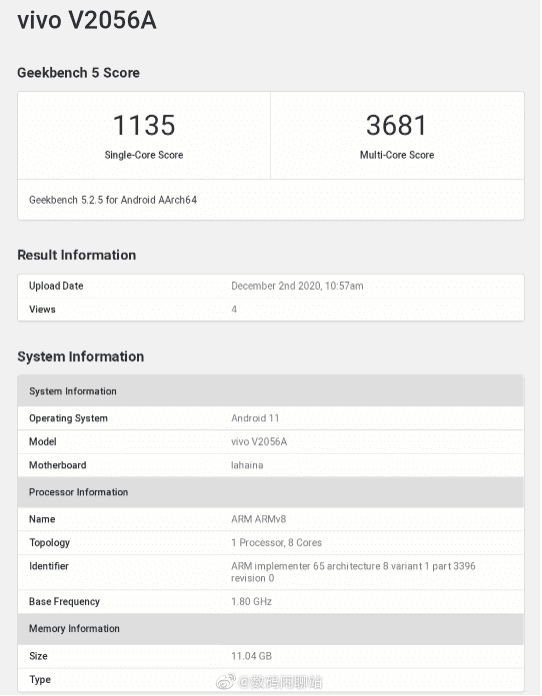
As we can see from the screenshot, the model of the machine is vivo V2056A. It scores 1135 points in the single-core and 3681 points in the multi-core tests.
Meizu 18
Meizu has also announced that the new Meizu phone equipped with Snapdragon 888 will debut in the spring of 2021.
Realme Race
An official announcement from Realme UK shows that it will also use this chip. The manufacturer says that the “Realme Race” will be one of the first to use the Snapdragon 888 SoC. In addition to the chip, Realme Race will come with up to 12GB of RAM and 256GB of storage. Of course, there will be other configurations maybe 8GB of RAM, 512GB storage, and so on. On the software end, the report shows that the Realme Race will come with Realme UI 2.0 on top of Android 11 out-of-the-box.
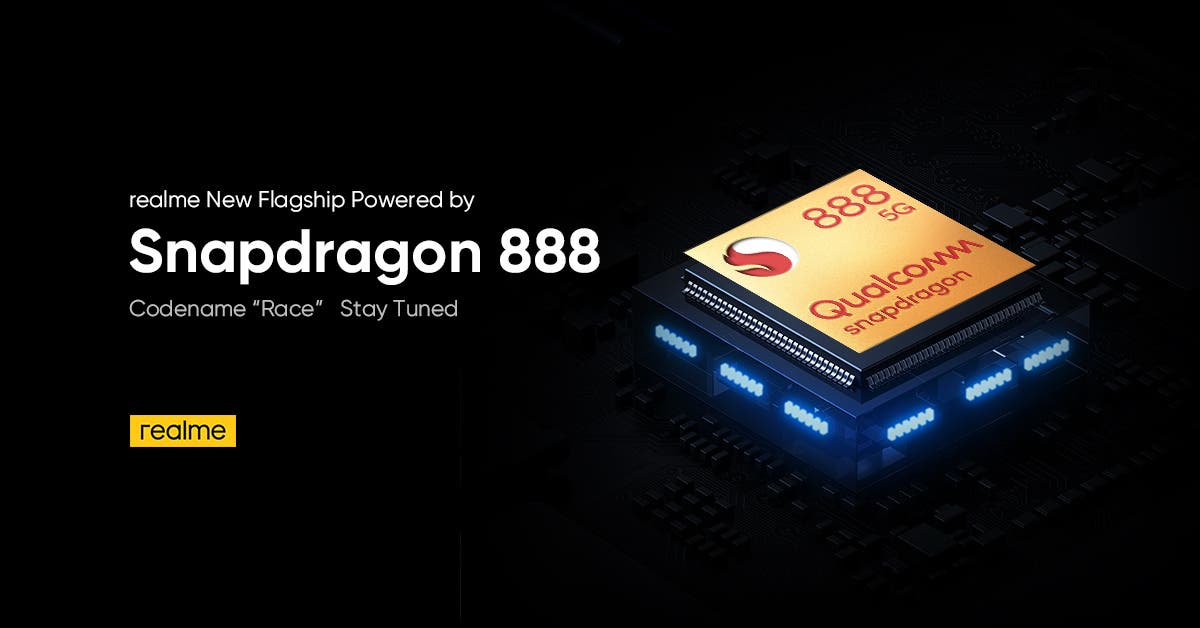
OnePlus 9 / OnePlus 888
Liu Zuohu, founder and CEO of OnePlus, spoke to Weibo users after the Snapdragon 888 announcement. He stated that next year OnePlus will celebrate 8 years since its founding. The OnePlus leader asked how they would react to the fact that a new flagship smartphone would come out under the name OnePlus 888.
In the upcoming OnePlus 9 Pro, we’ll have a rectangular quad-camera module. It will have curved edges like its predecessor and the OnePlus 8T. The flagship will stick with a 6.7-inch display, probably an AMOLED fluid screen. Moreover, it seems that OnePlus is beefing up its display to support a 144Hz refresh rate. Gaming phones already proved that the 144Hz in smartphones can be achieved, so we assume that a lot of companies will be moving to that refresh rate. The new handset will also come with better speakers offering Dolby Atmos support.
Honor XXX
When asked about the cooperation between Qualcomm and New Honor, Qualcomm President An Meng said that as a new participant in the market, Qualcomm is happy and looks forward to future cooperation with Honor. “Currently there are some dialogues, and the future depends on the specific situation of the development of the matter.”
A few days ago, Qualcomm’s 4G chips and other products have been licensed to continue to supply Huawei. An Meng said that Qualcomm has applied for the entire product line from the US government, but currently it has obtained licenses for 4G chips, computing and WiFi products, and top products must be licensed In order to cooperate with Huawei.
Nubia Z Series / Axon 30 / Red Magic 6
ZTE’s three series of models have been officially confirmed to use the newly-announced Snapdragon 888. They include the ZTE AXON 30 series, Red Magic 6 series, and Nubia Z series. The last model of the Nubia Z series was last year’s Z20, and it has been one and a half years since the launch of a new model.
It is worth mentioning that the ZTE AXON 20 series uses an under-screen camera model. So the ZTE AXON 30 series is expected to continue to be the flagship model based on this feature.
Lenovo Legion Series
Lenovo’s Legion gaming phones are also warming up on the official WeChat account, saying that the first batch of new flagships equipped with Qualcomm Snapdragon 888 may be the strongest, most innovative and coldest gaming phones in the universe.
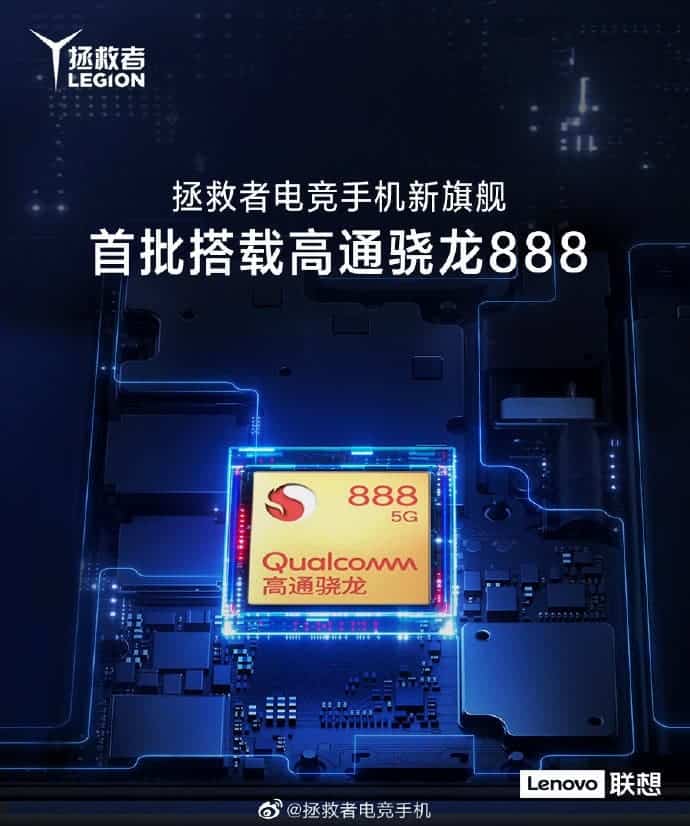
At The End
We have talked about the Samsung Galaxy S21 that it’s senseless to mention this series once again. Of course, Samsung will be the first to launch a Snapdragon 888 smartphone globally. And in the case of Huawei’s absence, it will grab a larger market share, undoubtedly. The South Korean manufacturer has been also thinking of bringing this handset sooner.
In its turn, OPPO has also announced through its Weibo channel that the new OPPO Find X series will sport this chip as well. And the new flagship model will hit the market in the first half of 2021.
We didn’t mention other major brands that will bring their own models too. Among them, we should mention ASUS, Black Shark, LG, Motorola, and Sharp.

